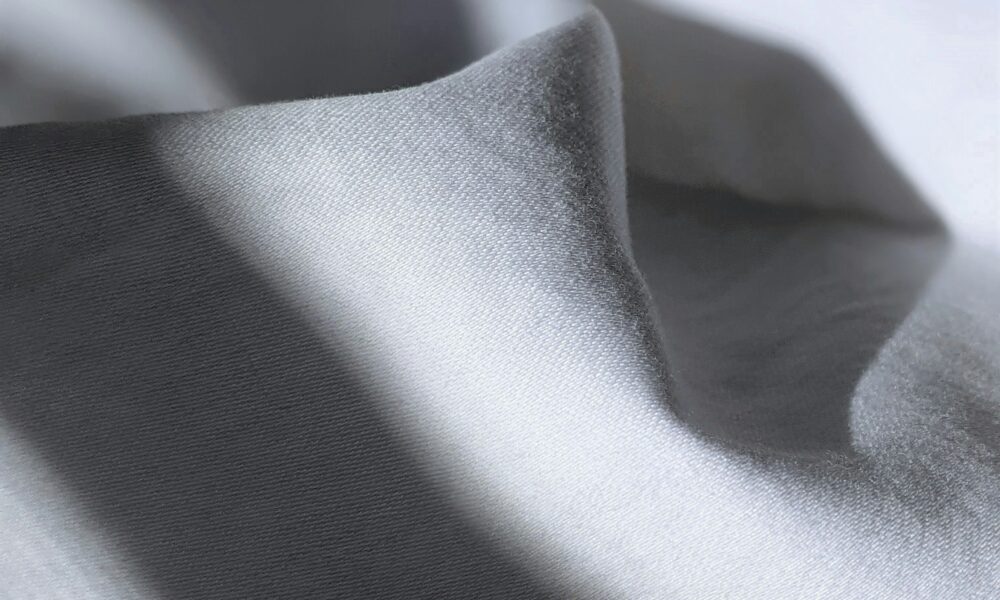Egyptian cotton or percale cotton duvet cover which one fits you best?

A good night’s rest starts with the right bedding. But the choice between different kinds of cotton can feel overwhelming, especially if this is the first time you’re looking at real quality products. At Hagatex we often hear the same question: is an Egyptisch katoen dekbedovertrek really better than a percale version? The short answer is: it depends on what matters most to you the sense of luxury, durability, ease of care, or price. In this article we’ll break both fabrics down to the fibre, so you can make a clear and personal choice.
Moisture control and temperature
One of the reasons hotel sheets often feel better than home sheets is how well they handle humidity and warmth. Egyptian cotton, with its fine yarn, creates tiny air pockets that pull moisture away straight away. Percale cotton does it too, but slower; its slightly thicker yarns trap a bit more warmth. In a Hagatex lab test, Egyptian cotton held 8% less moisture at 65% humidity than percale with the same thread count. That small number can make the difference between tossing on a hot night and sleeping through.
Softness versus crispness
Anyone who has slept in a high end resort will remember that buttery, almost silky feel. That’s nearly always Egyptian cotton, often woven in sateen. The long fibres plus the weave give a slight sheen and a very smooth touch. Percale, by contrast, delivers the crisp, fresh “hotel feel” tightly made sheets that crackle when you smooth them out. It’s really about preference: side sleepers who like quick changes in surface temperature lean toward percale. People who want pure softness and warmth usually prefer Egyptian.
Durability and pilling
Think of a wool sweater that starts to pill after a few washes. The same can happen with bedding woven from short fibres. Egyptian cotton pills less simply because the fibre is longer and stronger. High-grade percale made from long-staple cotton (for example Supima) performs almost as well. The key is fibre length combined with density. Cheap percale at 180 TC made from short fibres will pill much sooner than Egyptian sateen at 300 TC. Nobody wants cupboards full of high-maintenance linen. Egyptian cotton needs a bit more care: wash at 40–60 °C, avoid high dryer spins, iron at moderate heat. Percale is a touch more forgiving and tends to crease less. In practice, finishing quality makes the real difference. Hagatex treats both Egyptian and percale with a sanforising process so shrinkage stays below 3% and ironing is manageable.
Price
Is the higher cost worth it? On average, Egyptian cotton duvet covers are about 20–40% more expensive than comparable percale. For people who use their bedding daily and value silky feel and long life, the premium pays for itself. For a guest room used only now and then, percale is often the practical choice. A boutique hotel in Antwerp switched all covers to Egyptian cotton sateen. Sleep comfort ratings rose from 8.6 to 9.2 in just three months. They raised room rates by €5 with no drop in bookings. A B&B in Zeeland went with percale because rooms are only occupied a couple of nights per week. Lower drying temperatures cut energy bills, ironing time was halved, and the missed luxury upgrade wasn’t worth the extra cost.
Thread count myths
High thread count sounds appealing, but beyond 400 TC it adds little. Airflow drops, fabric gets heavier. Some brands even twist double yarns to claim 800 TC, which reduces breathability. Hagatex works with 300–400 TC sateen for Egyptian and 200–250 TC percale for the ideal mix of comfort and freshness.
Tips for longer life
- Wash before first use to remove residues.
- Turn Egyptian cotton inside out before washing.
- Use liquid detergent without optical brighteners.
- Fill the machine only two-thirds.
- Line dry when possible; the fabric nearly irons itself.
For percale, drying at low spin often leaves it nearly wrinkle free.
Colour and aesthetics
Egyptian cotton’s long fibres let dye penetrate deeper, so colours stay rich after many washes. Percale in whites and light shades stays brighter, especially with chlorine free detergents. All Hagatex Egyptian cotton covers are dyed reactively and stabilised, so even bold duvets won’t show through a white cover.
When percale makes sense
If you want a cooler, slightly crisper texture and don’t want to iron much, dense percale is the way to go. Hotels with frequent changes prefer it because it dries quickly and creases less, saving labour and energy. At home it gives that “just made bed” feel, especially in rooms with stable temperatures. If you’re after maximum softness, subtle sheen, and fabric that still feels premium after years, extra long staple Egyptian cotton is worth it. It breathes better, stays cool in summer, cosy in winter, and shows little pilling even after heavy washing. For warm sleepers or those who want the top tier of luxury, it’s a real upgrade.
Conclusion: No single “best” choice
There is no one perfect sheet. The right choice depends on your climate, budget, and taste. Egyptian cotton offers silky luxury, excellent moisture control and long life at a higher price. Percale delivers crisp freshness, less ironing and a friendlier price tag. Whichever you pick, Hagatex is ready with advice, fabric samples and certified lines so your next night’s sleep is under bedding tailored to you.
Voor meer informatie en maatwerkoplossingen bezoekt u Hagatex

Source: Egyptian cotton or percale cotton duvet cover which one fits you best?


